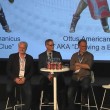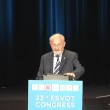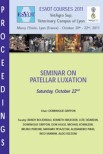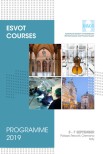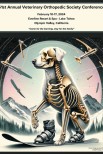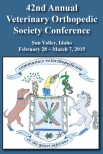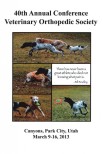Stuart Carmichael
Director, Fitzpatrick Referrals
Guildford, UK
I graduated from the University of Glasgow in 1978 and immediately became a House Surgeon for 1 year and then a Wellcome Research Assistant in Veterinary Neurology. In 1981 I was appointed as lecturer in orthopaedic surgery at the University of Glasgow and obtained a Master’s degree and the RCVS Diploma in Small Animal Orthopaedics , both in 1987. I left University of Glasgow in 1990 and joined a private referral practice in East London offering orthopaedic referrals. In 1991
I was recruited to the Royal Veterinary College in London as lecturer in orthopaedics and Director of the Queen Mother Hospital, becoming senior lecturer in 1993. I returned to the University of Glasgow in 1996 as Senior lecturer and Director of the Small Animal Hospital. I was awarded a personal chair in 1999 and became Director of Corporate Communications in 2005 and Associate Dean in 2006.
I joined Vets Now Ltd in 2009 helping to establish the new Vets Now Referrals Group opening two new referral hospitals In 2012 I joined Fitzpatrick Referrals as Director of the newly formed Fitzpatrick group and MD of Fitzpatrick Learning Academy and FitzClinic Company.
G.S-S. At what age did you decide that you wished to become a Veterinarian?
S.C I did not decide to pursue a veterinary career until I was in 4th year at secondary school at the age of 16
G.S-S. Did any particular individual affect your decision and was there such a person who was your mentor, even after you graduated?
S.C I was part of the James Herriot generation and his books were influential in me selecting veterinary medicine. As an undergraduate I was always interested in surgery and influenced by the late Jimmy Campbell, Gordon Baker and Ian Griffiths who were all on the faculty at Glasgow at the time. After graduation, again Ian Griffiths , Gordon Baker were influential with Donald Lawson and Sir William Weipers giving me crucial guidance. I also picked up my interest in arthritis from David Bennett. Ian Griffiths was probably the key person during my early career.
G.S.S. Are you particularly proud of anything that you have written or a technique that you published that has been generally accepted?
S.C. I am proud of many things. I have been fascinated by osteoarthritis for the past decade or so and in particular our failure as a profession to manage it well. I am pleased that my efforts to try and develop management schemes to enable this ubiquitous disease to be managed better in general practice However the thing that I am most proud off is seeing the many residents that I had the privilege to work with, develop and make their mark on orthopaedic surgery.
G.S-S. In the last decade there has been an explosion of implants for small animal veterinary orthopaedists; what do you predict will lies in the future for them; including features that are not solely for fixation?
S.C. I think the future will be all about biological manipulation and bionics. I think a better control of biology will reduce our need for many of the implants that we currently view as necessary. Implant development will become more sophisticated and we will replace as well as effecting repair much more in parallel with developments in human medicine. I also forsee a greater drawing together of veterinary and human orthopaedics to accelerate our progress in this key area.

